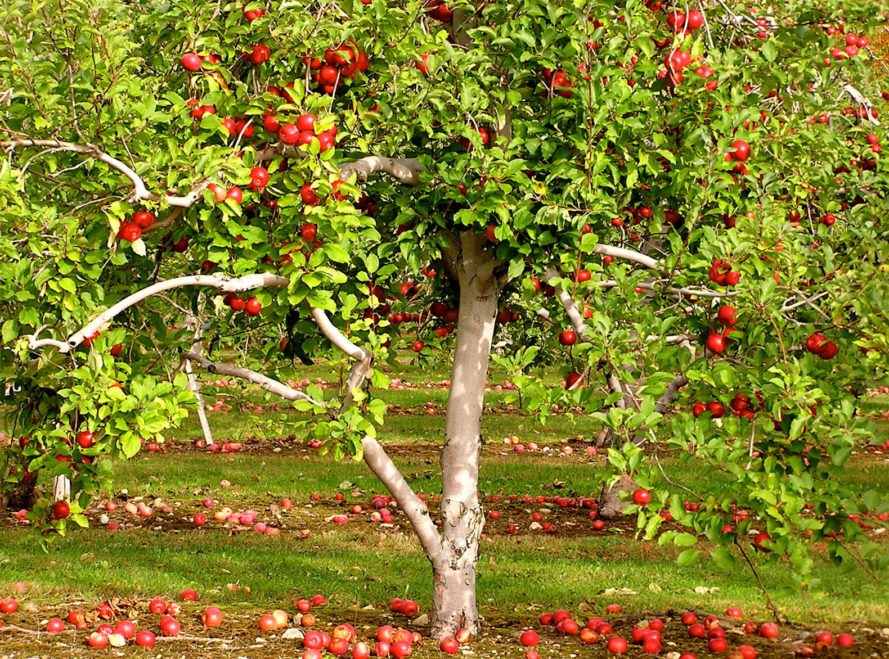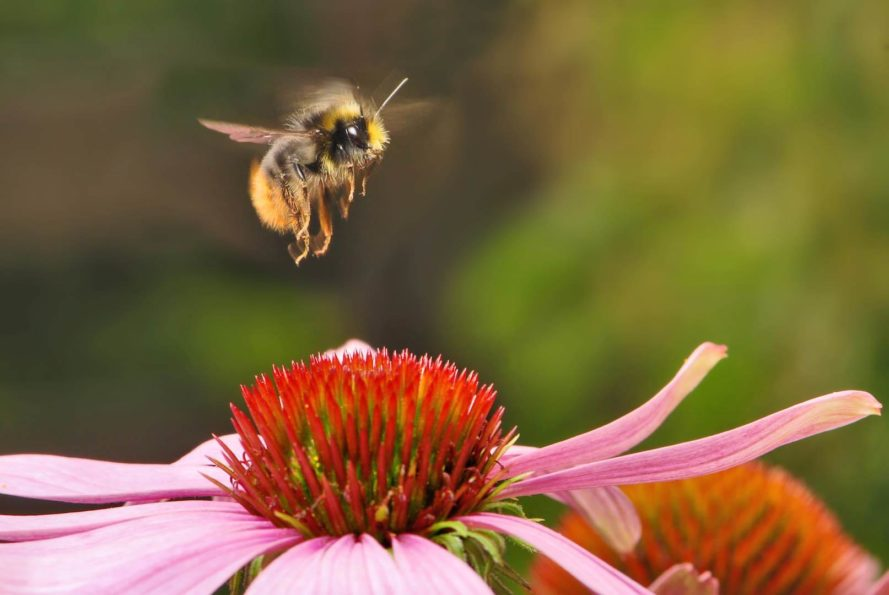Source: inhabitat.com
Published: March 30, 2017
Spring has officially sprung and it’s a great time to renew your connection to this beautiful planet we call home. One great way to deepen your connection with the earth is to get outdoors, digging in the dirt and planting food to green the land and provide sustenance for yourself and your family. Newbie gardeners may feel apprehensive about trying to grow edible plants, but there are many simple gardening projects that are easy to do, both indoors and out. From planting fruit trees, to growing leftover herbs, to creating a butterfly garden, here are eight great beginner gardening projects to get you started in deepening your connection to the earth and understanding how to provide for yourself.

GROW YOUR OWN TOMATOES INDOORS
Who doesn’t love the taste of home-grown cherry tomatoes? While growing tomato plants may seem daunting to a newbie gardener, they are actually surprisingly easy plants to cultivate, either indoors or out. I’ve grown many tomato plants indoors, in window gardens, both in New York City and in San Francisco (two places with wildly different climates), so it doesn’t really matter where you live, if you want to grow delicious tomatoes – you just need to grow them indoors. The trick to successful tomatoes is starting them in the spring with seedlings and then understanding that they require a lot of sun, heat and water to ripen to sweet delicious tomatoes, so you need a bright window (ideally south facing) and daily watering once they start fruiting. I picked my tomato seedlings up at my local Home Depot, but you can find them at most garden centers in the spring. Tomato plants are self-pollinating – which means they don’t need pollinators or other plants to grow fruit, but if you are indoors (without a lot of bees flying about) you can aid the pollination process along by shaking the flowers gently every day or using an electric toothbrush to vibrate them.
Click here to watch “Easiest Way to Regrow Scallions All Year-Round”: https://youtu.be/HX9a45xyugY
START A KITCHEN SCRAP SCALLION GARDEN
Did you know you can regrow new scallion plants from the bottom end of leftover scallion scraps? Check out Inhabitat editor Yuka Yoneda’s great DIY scallion farm tutorial on how to do this in 10 minutes, using a recycled plastic container, an exacto knife, and your scallion scraps. Why be wasteful when you can be resourceful!?
This trick also works (albeit with a slightly different technique) using old onions or garlic that have sprouted. You can plant and sprout onions and garlic and then chop up their greens on an ongoing basis when you need chives.

PLANT AN APPLE TREE
An apple a day keeps the doctor away – or so goes the old saying, dating back to a Welsh proverb from 1860. Apples really are good for you, and they’re nature’s perfect snack; tasty, crispy, easily transportable, and they keep well for a long time. They’re also relatively easy to grow in almost every climate in the US. The trick with apples is to understand the concept of chill hours, and know what types of apples grow best in your local climate. Every cultivar of apple needs a certain number of cold winter frost hours (chill hours) to produce fruit in the spring. Some cultivars need more than others and can only be grown in climates where it gets very cold in the winter such as the Northeast (sadly my favorite type, the Honeycrisp apple, falls in this category). Other types, such as Fuji Apple, can be grown in mild climates like that of San Francisco, which don’t get a lot of chill hours. Sapling apple trees can be found at most local garden centers. I got a fabulous multi-variety grafted tree from my local Home Depot.

PLANT A POLLINATOR GARDEN WITH NATIVE FLOWERS
If you’re wondering why this one is listed under “edible” – it’s important to understand how crucial pollinators are to our food supply. Honeybees, bumblebees and butterflies help pollinate plants, including many of the farmed ones that we eat as food, such as apples, citrus, cherries, pears, soybeans, almonds, peaches, melons, corn, blueberries, coffee, chocolate. Without pollinators, we wouldn’t be able to enjoy much of the food we eat today. And you may have heard that our most important food-crop pollinator, bees, have been dying in large numbers, leading to colony collage disorder. You can support bees, butterflies and other pollinators by planting an organic pollinator garden of native flowers, so your local bees and butterflies have nectar to eat, and then in turn, can help pollinate food for you to eat! Mixes of native pollinator seeds can be found in most garden centers. If you are concerned about colony collapse disorder, don’t use chemical pesticides in your garden (especially neonicotinoids). Instead use natural pest management techniques, such as bringing in ladybugs, lacewings, mantises, and other predator bugs that eat pests.
Click here to watch “How to Grow A Lemon Tree From A Seed, by Inhabitat Gardening Guru Petey Rojas”: https://youtu.be/4Tndy9sAfLc
GROW CITRUS FROM SEED
You can easily buy a lemon or an orange tree from a local garden center, but growing your own citrus tree from seed is so much more fun! It is really easy to grow citrus from seeds – watch the video above to see how to do it! The trick to caring for citrus is to understand its growing requirements. Citrus are tropical and subtropical fruits, which mean they need a lot of sunlight and heat. You can grown citrus outdoors year round in Florida and California, but if you live in a climate with colder winters, you’ll need to grow your citrus indoors in pots you can bring into your house before frost. Citrus also generally requires a lot of fertilizer with high nitrogen – some growers like to use special citrus fertilizer. If you want a citrus plant that will produce reliable fruit you’ll need to purchase a commercially grafted variety from a store, like this bad boy. Citrus hybridizes readily, which means that citrus plants you grow from seed could produce some weird hybrid unknown fruit – could be good, or very bad. It also takes many years of growth before a tree grown from seed will set flowers and fruit.
Grow your own citrus from seed >

GROW AVOCADO FROM SEED
In a testament to the growing popularity of avocados, Inhabitat’s most popular post of all time is a guide to growing avocado from seed. Growing avocados from seed is definitely more challenging than growing citrus, but the challenge is part of the fun. Check out this perennially popular how-to for the avocado-growing technique that works for me every time. Similar to the other fruit trees we discussed in this article, if you want an avocado tree that reliably produces good fruit, you should buy a commercially grafted tree. Avocados grown from seed can take ten years to bear fruit, and the fruit is most likely a hybrid, and will not taste like the Hass Avocado from whence the seed came. But growing from seed is so rewarding!
